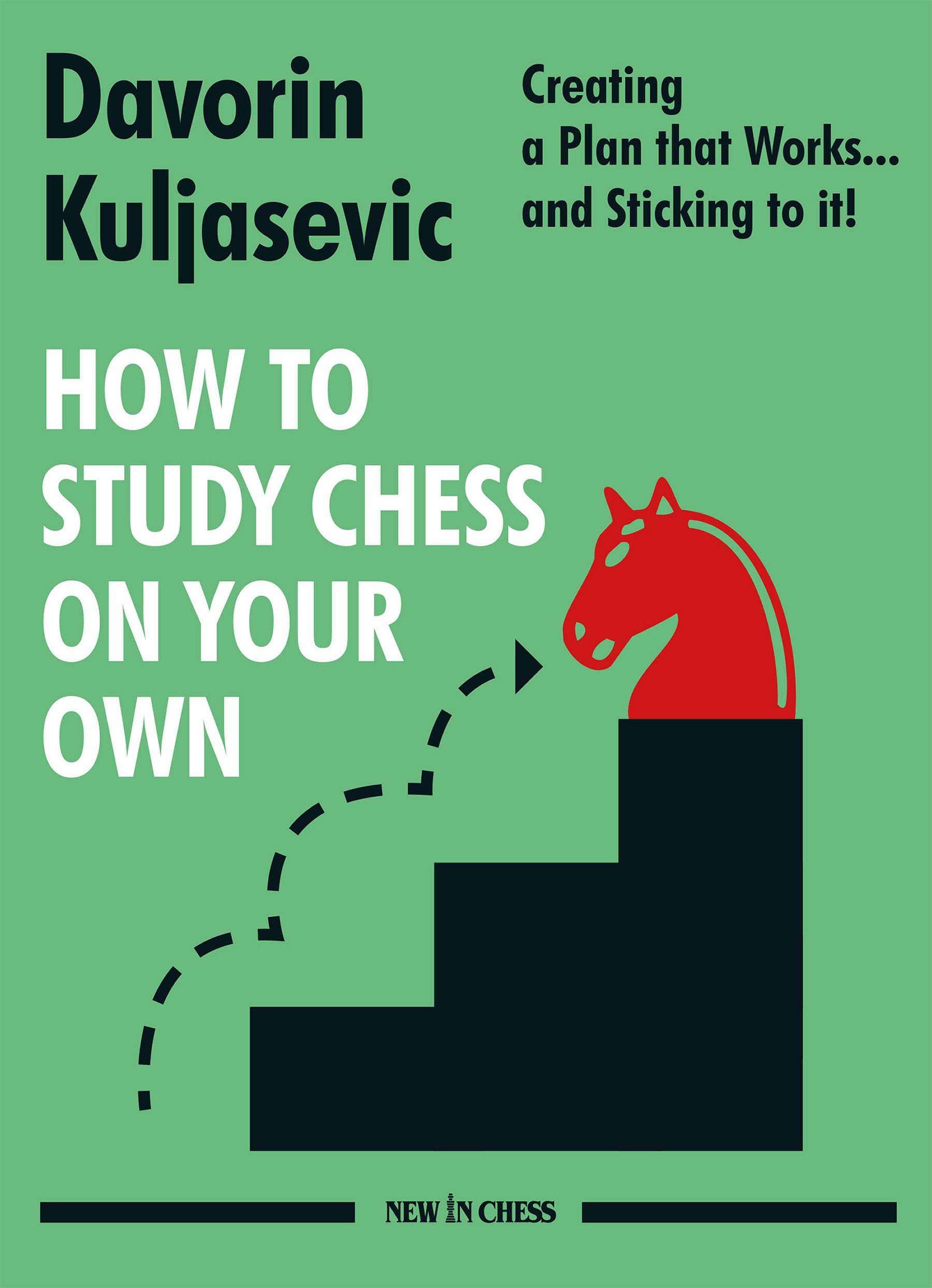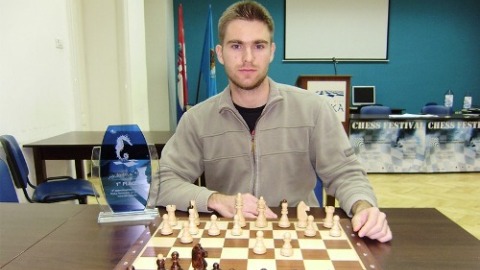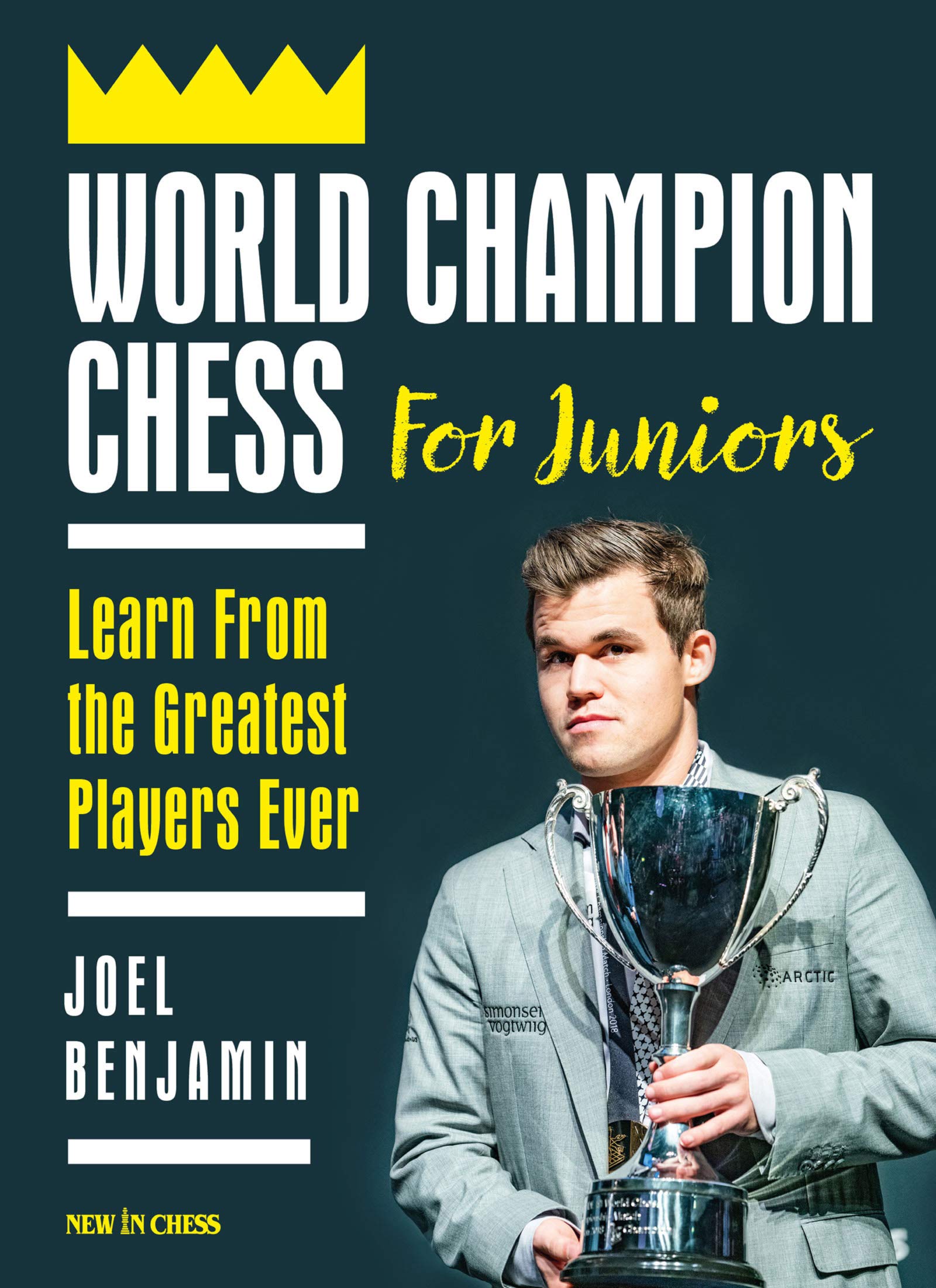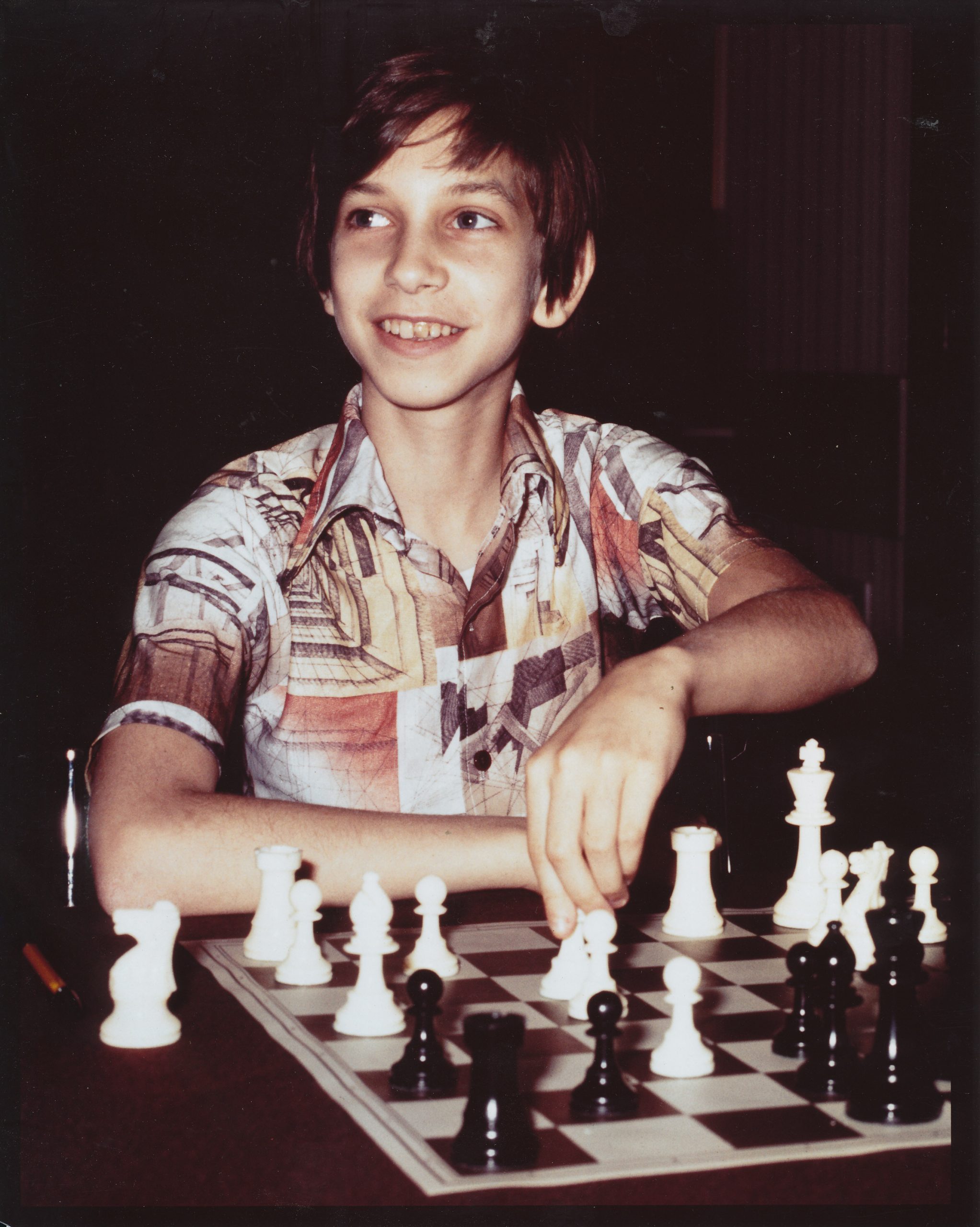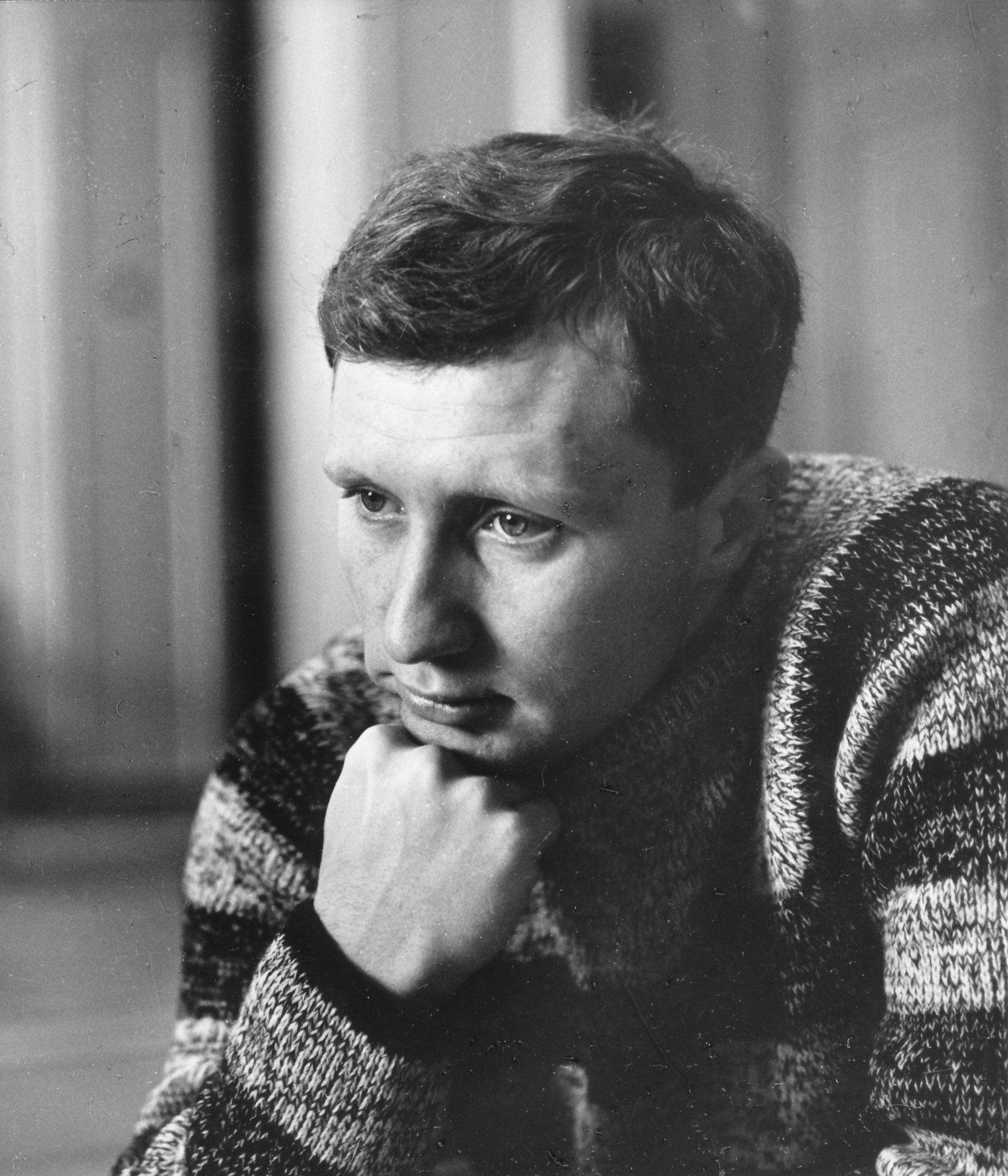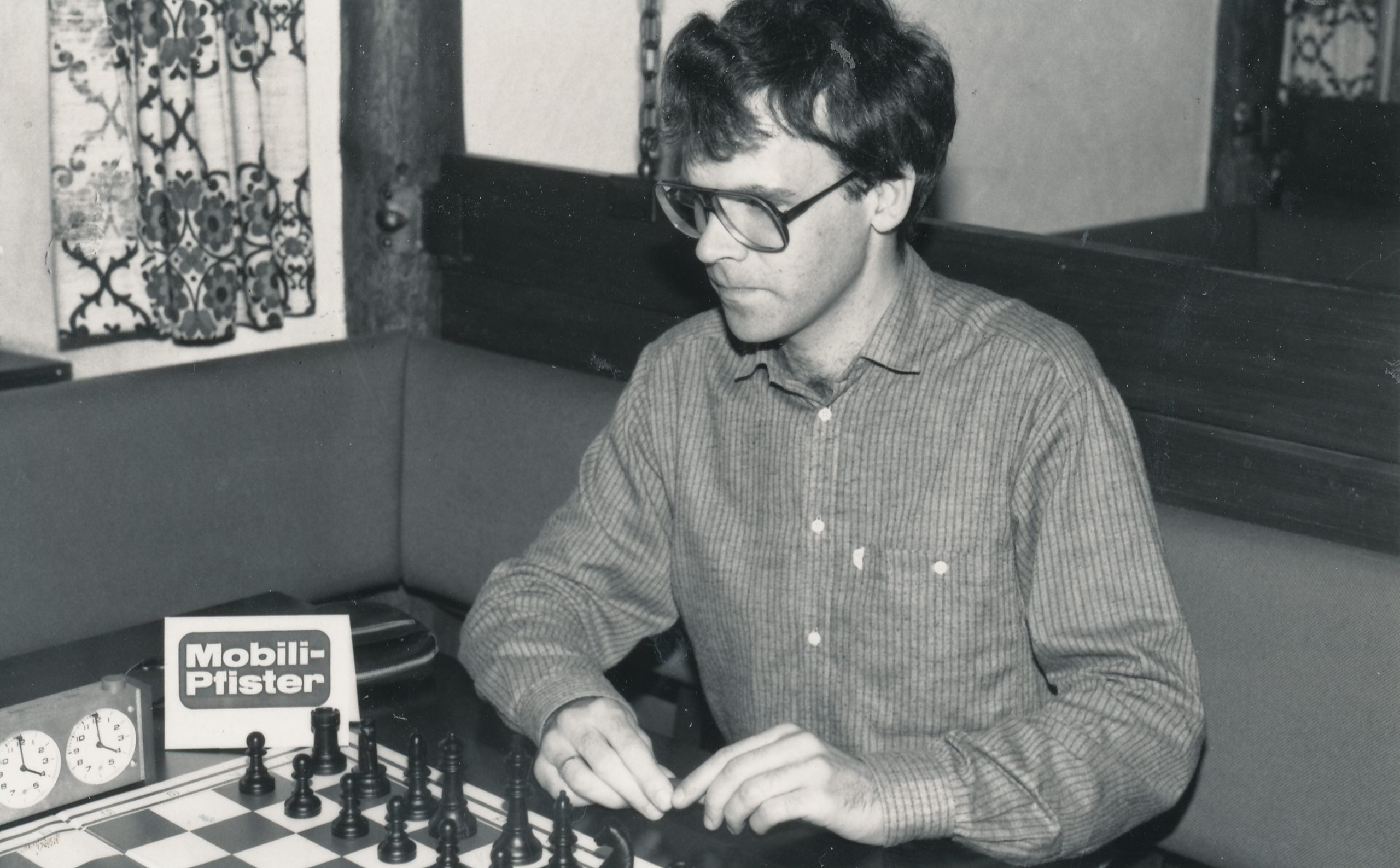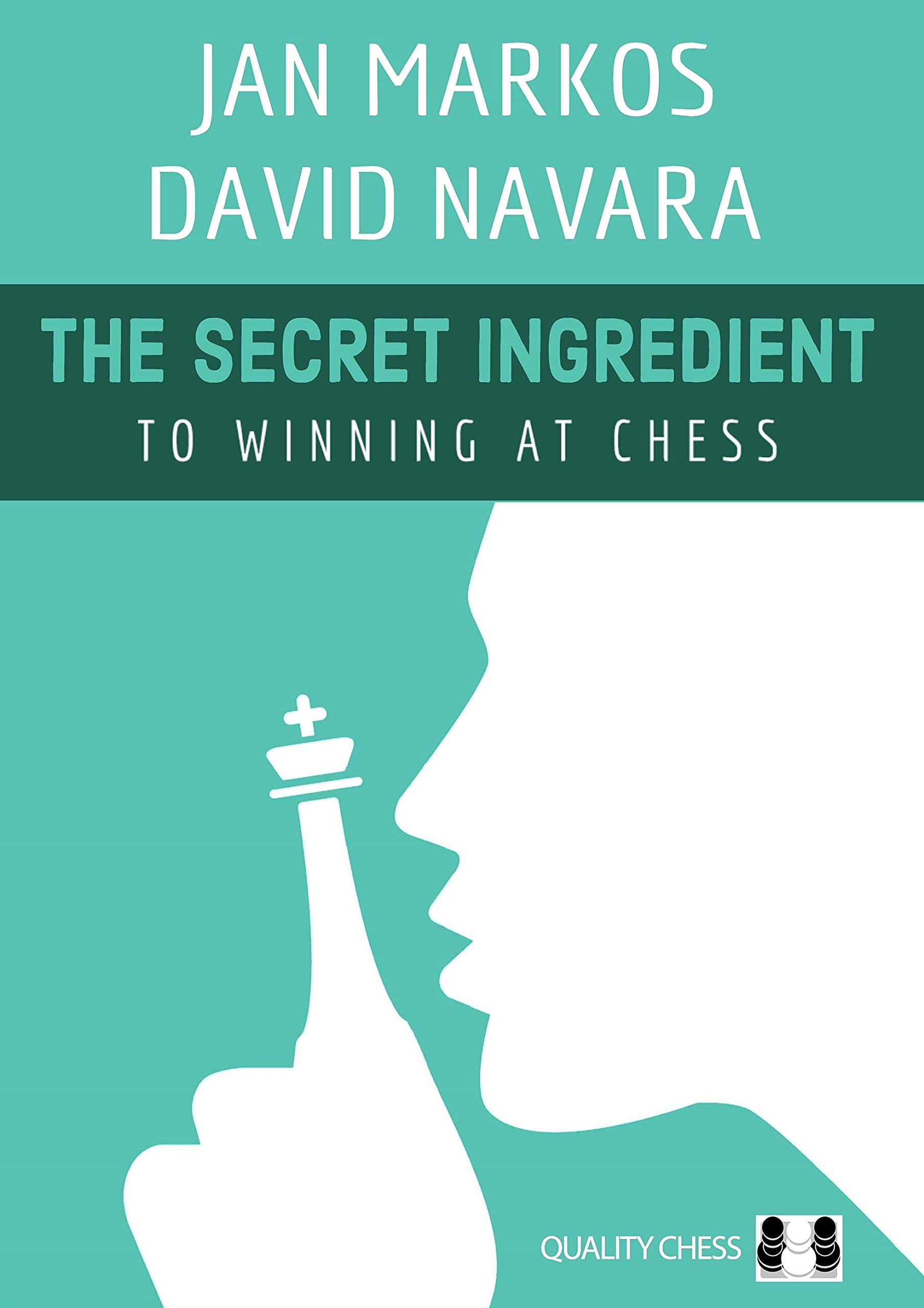
From the publisher:
“The Secret Ingredient is a grandmaster guide to maximizing your chess results, focusing on key elements of practical play which have received little to no attention in previous chess literature.
How exactly can we best make use of computers? What’s the ideal, step-by-step way to prepare against a specific opponent? How can we optimize our time management at the board? And what’s the one key skill that separates the best players from those who have yet to reach their full potential? GM Jan Markos sheds light on these topics and many more, helped by the world-class insights of his good friend GM David Navara.”
“Jan Markos is a Slovakian grandmaster and trainer. His previous book, Under the Surface, was the English Chess Federation’s 2018 Book of the Year.
David Navara is a ten-time Czech Champion and a world-class grandmaster. He is noted for combining fighting spirit with outstanding sportsmanship.”
End of blurb…
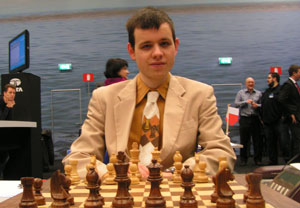
Quality Chess live up to their name by being one of the few publishers who offer a hardback as well as softback version of all of their titles.
The production values are superb with a “McFarland-like” feel. Of course, you could save a few pence and go for the paperback version but we would definitely treat ourselves with an early Christmas present and savour the hardback. In addition, high quality paper is used and the printing is clear: excellent glossy paper has been used. The weight of this paper gives the book an even better feel to it!
The book can easily be laid flat next to the board and does not require weights to prevent it from “self-closing” (a particular bugbear of ours). Each diagram is clear and the instructional text is typeset in two column format, which, we find, enables the reader to maintain their place easily. Figurine algebraic notation is used throughout and the diagrams are placed adjacent to the relevant text. (JEU)
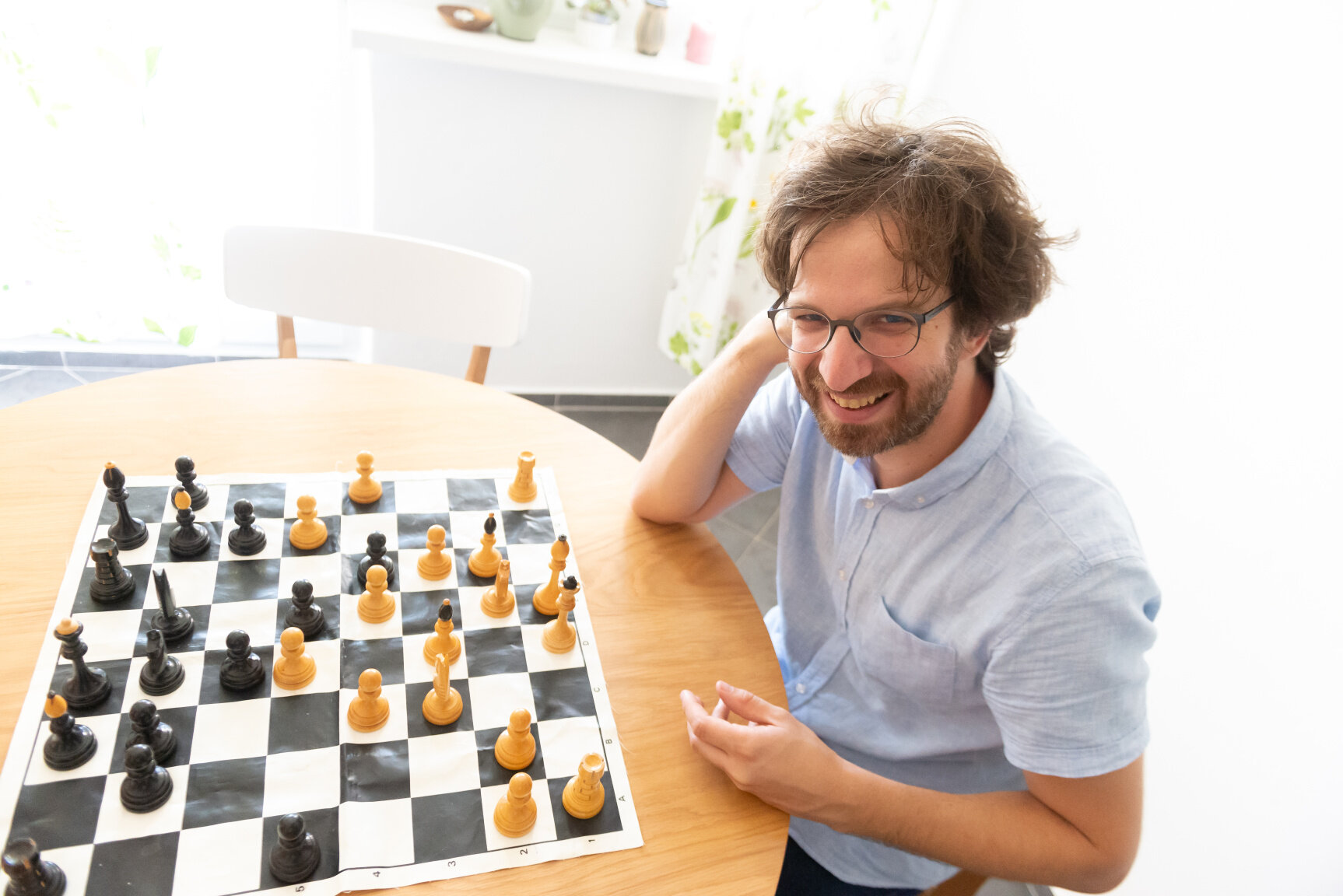
From the introduction, written by Jan Markos:
This is above all a practical book. My goal is simple: I want to help you avoid as many disastrous defeats … as possible. I’ll show you what a real fight on the chessboard is all about. And I would like you to learn how to hold your ground in this fight. I’ll tell you how to cope with stress, how to use your time efficiently and how to make well-reasoned decisions. I’ll show you how to prepare for every individual opponent and how to play endgames in 30-second rhythm.
In short, this book wants to teach you how to win at chess.
I haven’t read Jan Markos’s previous award-winning book, so was interested to receive this. Most of the book is written by Markos, with contributions by David Navara, providing further examples, agreeing with, or, on occasion, disagreeing with his colleague, are printed using a sans serif font, helpfully allowing the reader to differentiate between the two authorial voices.
Diving into Chapter 1, looking at what grandmaster chess is really like, I was immediately taken by Markos’s comments on tactics:
In real chess, the width of your calculation is usually much more important than its depth.
Indeed so, and this is precisely the limitation of most tactics books, not to mention online tactics training.
This is Markos – Tomashevsky (Plovdiv 2008).
Markos takes up the story:
I knew I had to stop the advance of the black d-pawn, but I considered just one way to prevent d5-d4. I included only 22. Qa1 into my calculation, perhaps because I liked the potential threat of checkmate on g7. In fact, 22. Qa1 is only one of three good moves available to White in this position: the other two being 22. Ne2 and 22. Qb4.
He demonstrated the long variation he calculated, which is what happened in the game, but adds:
If I had focused more on the width of my calculation, I might have noticed that Black could have met 22. Qa1 with a much stronger reply: 22… Rc3!
Reviving the threat of …d5-d4 in a much better setting, To escape a downright losing position, White has to find the non-trivial:
23. Rc1! d4 24. Rxc3! dxe3+ 25. Kg1 (even the exotic 25. Ke1!? is playable) 25… exf3 26. gxf3
reaching a position where Black has sufficient compensation for the sacrificed material, but nothing more.
He adds:
Good calculation doesn’t look like a way through a tunnel and isn’t meant to get you as far as possible in one direction. It resembles more a path through an unknown forest; you have to consider all the detours and paths you encounter, one step at a time.
In endings, though, things are very different. With fewer pieces on the board, you can – and have to calculate much further ahead.
I found Chapter 2, about the limits of computer evaluation, particularly interesting. We learn that there are several types of equal position: eternal balance, where anything sensible for either player draws, stable balance, where strong players will have no problem drawing with either colour, and fragile balance, where it’s difficult for one or both players to find the correct moves to maintain equality. Likewise, there are different types of advantage, again to do with how easy it is to find the best continuation.
Navara demonstrates a spectacular example.
Black is objectively winning, yet I believe that in 90 per cent of practical games, White players would win.
If, on the other hand, you presented it to grandmasters or international masters with a hint “Black to move wins”, the situation would be quite different. I would estimate that half of the players, or even more, would discover the correct continuation.
This is Ni Hua – Le Quang Liem (Ho Chi Minh City 2012).
The game concluded 29… h5? 30. Qxh5 Ba3+ 31. Kxb3 and Black resigned.
Engines prefer to continue 29… Ba3+! 30. Kxb3 a1N+!! 31. Rxa1 Qb6+!! 32. Bxb6 Nd4+! 33. Kc3 Rxc4+! 34. Kxc4 Rc8+ 35. Bc7 Rxc7#.
In Chapter 3, Markos asks a question.
But is there a single, defining skill that any mature chess player should master?
Well, Jan, is there?
If you ask me, yes there is – and it’s the art of defence. The ability to defend themselves is that separates mature players from the youngsters in the chess world. There’s a certain logic behind it; defence is the most demanding part of the game – requiring not only chess skills, but also strength of character from an individual. You need to be both patient and able to take a risk. You need to devote a lot of energy to every single move and never take an immediate reward for granted.
Here’s Markos in 2018 playing black against Viktor Gazik, who, a few months later, would become World Junior Champion.
White’s position is quite uncomfortable, as Black can build up an attack along the g- and h-files in an instant. Yet, objectively speaking, it’s only slightly worse. To defend successfully, White only needs to exchange off the bishop on f2, which will enable him to cover g2 with his rook along the second rank. If Gazik had realized this, he would have played 25. Qd3, and after the possible continuation 25… Rg8 26. Bd4 Qg6 27. Rc2, I would have had only a slight superiority.
But Gazik panicked, playing the active but misguided 25. c5?, losing a few moves later.
An instructive moment, I think, because White has to trade off what looks like his opponent’s bad bishop. Yes, defence is difficult.
Chapter 4 concerns the important topic of time management.
Save your time for when you need it, advises Markos. The more important the decision you have to make, the more time you should spend making it. With small decisions, decide quickly; for bigger decisions, allow time to think them over.
Chapter 5 features a subject close to my heart: the draw. When should you offer a draw? When should you accept or decline your opponent’s offer?
There’s a lot of psychology involved here, and chess psychology is the subject of Chapter 6.
In the game Roiz – Holzke (Rijeka 2010) White missed the chance to win a piece: 21. Nd3! Qxb3 22. Nc5 Qb2 23. Rab1.
Roiz simply regarded this position as strategic, and from this point of view the pawn on b3 was untouchable. I’m quite sure that a player such as Shirov or Tal would have won the knight, even in a blitz game.
…
Seek and you will find. Its opposite is equally valid: if you don’t seek, you won’t find. It’s no coincidence that the best chess players are usually (at least behind the chessboard) optimists. Their optimism and confidence help them to find solutions and fight even in situations where other players would long have lost hope.
Chapters 7 and 8 are perhaps of less relevance to average club players. If you play most of your over the board chess in league matches and weekend congresses you’ll have little opportunity to prepare in depth for specific opponents.
Giving a few examples, Chapter 7 explains how to research your next opponent’s games, looking at their style, strengths and weaknesses. Chapter 8 takes this further, looking at how you can choose a specific opening variation that will make your opponent uncomfortable.
Then we have a quiz with ten (hard) questions, in which you can compare your answers with those of David Navara.
The book concludes with a chapter summarising the lessons to be learnt from the book.
Jan Markos is an excellent writer, who uses metaphors to draw you into his world. Each chapter starts a long way from chess, discussing anything from Aesop’s Fables, via Andy Warhol, to initiation rites in Vanuatu, and concludes with Markos asking his co-author three questions about the topic in question.
The examples themselves are, I think, pitched at a pretty high level: I’d say 2200+. As a player of about 2000 strength, I usually learn more from simpler positions taken from games played at lower levels, but, yes, I understand that looking at grandmaster play is the point of the book. The content, also, is, for the most part more suitable for higher rated players, although, in the first six chapters, there’s a lot of general advice which any serious player will find useful.
If you’re a strong, ambitious player aiming towards IM or GM level I’m sure you’ll find this book invaluable. But lower rated players will also find much to enjoy, from Markos’s engaging style of writing to a host of fascinating positions taken from grandmaster play, and pick up some helpful tips for general improvement along the way. Best of all, you also get a genuine understanding of what grandmaster chess is all about, taking you beyond the familiar brilliancies and sacrifices into the minds and brains of elite players.
The book is beautifully produced: the standard of translation, editing and proofreading by Quality Chess seems to me to be a class above that of many other chess publishers. Although there are a few insignificant translational infelicities, I’ve yet to find any typos: most unusual for a chess book.
Highly recommended, then, for anyone hoping to reach master strength, but also with a lot to interest club and tournament players . I can see why Markos’s previous book was so successful. If the content appeals, you won’t be disappointed.
Richard James, Twickenham 3rd October 2021

Book Details :
- Paperback : 224 pages
- Publisher: Quality Chess UK LLP (7 Feb. 2022)
- Language: English
- ISBN-10:1784831425
- ISBN-13:978-1784831424
- Product Dimensions: 17 x 2 x 24 cm
Official web site of Quality Chess


